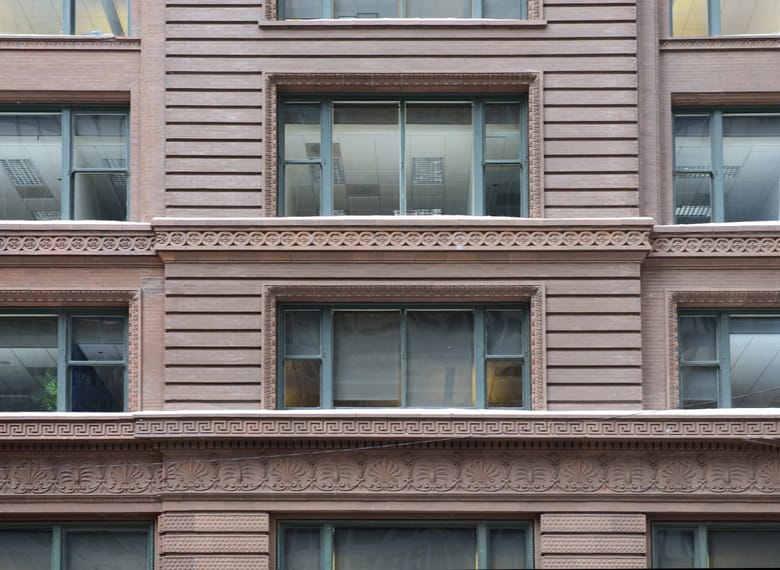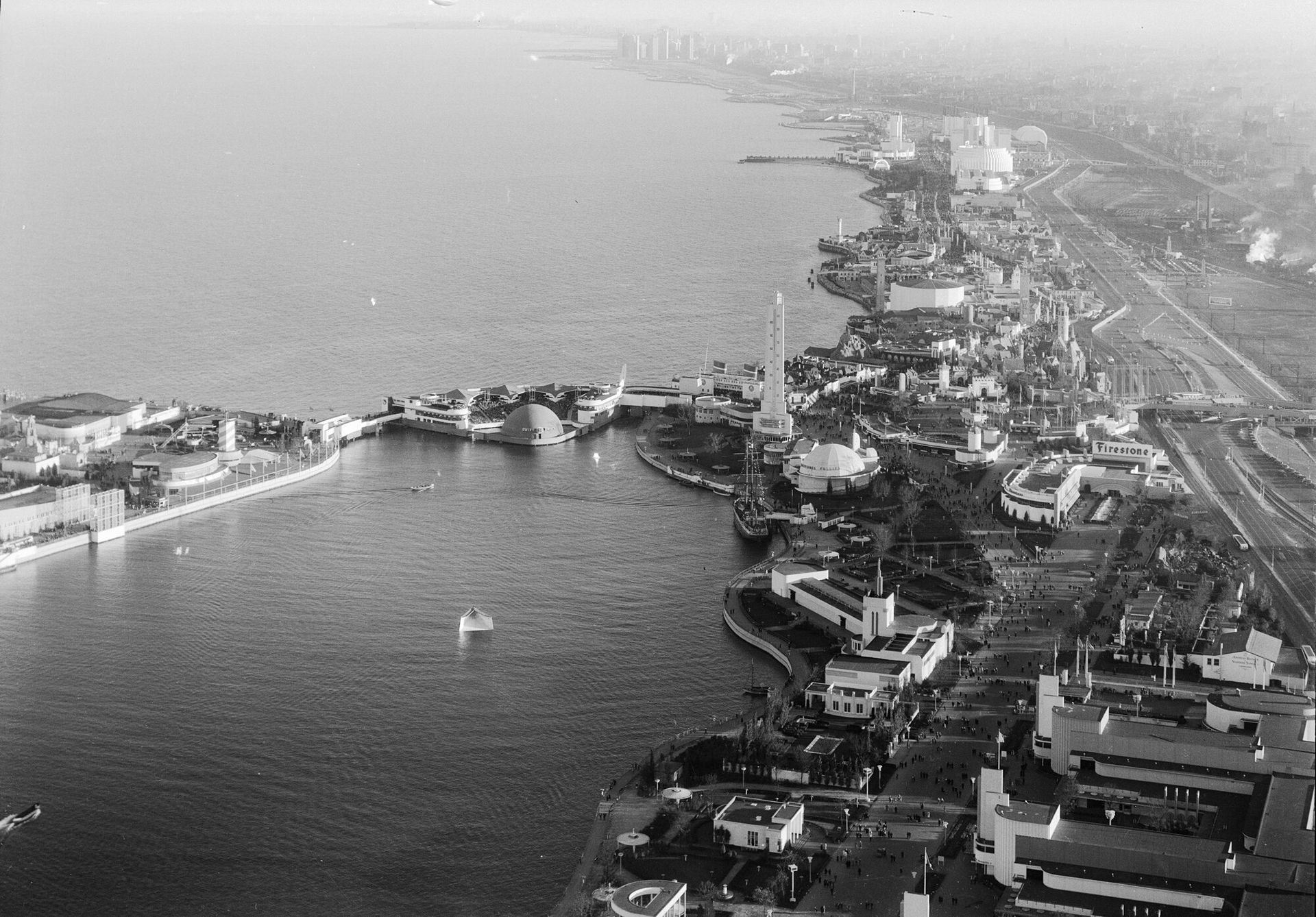Chicago Window
Chicago windows on the Marquette Building
A Chicago Window is a distinctive style of window that became a hallmark of Chicago School architecture in the late 19th and early 20th centuries and is closely linked to the rise of the skyscraper. This window type consists of a large fixed central pane flanked by two narrower operable sash windows. The central pane is usually much larger than the side panes, providing ample natural light and unobstructed views, while the side windows allow for ventilation in the era before air conditioning. The Chicago window is both functional and aesthetically significant, reflecting the architectural innovations and urban development of the era.
EXAMPLES IN CHICAGO:
- Reliance Building: Completed in 1895 and designed by Charles B. Atwood, the Reliance Building is one of the earliest and most prominent examples of the Chicago window. The building’s façade is characterized by large bays of Chicago windows, with their expansive central panes and narrow operable side windows. This design not only maximized natural light but also contributed to the building’s light, airy appearance, a departure from the heavy masonry of earlier structures.
- Sullivan Center: Designed by Louis Sullivan and completed in 1899, the Carson Pirie Scott Building (originally the Schlesinger & Mayer Store) features a series of Chicago windows on its upper floors. Sullivan’s use of these windows, combined with his ornate cast-iron ornamentation at the lower levels, exemplifies the Chicago School’s blend of form and function. The large windows allowed the retail spaces to be brightly lit and visually open, enhancing the shopping experience.
- Marquette Building: Another significant example of Chicago School architecture, the Marquette Building, completed in 1895 by Holabird & Roche, also incorporates Chicago windows in its design. The building’s façades are punctuated by these windows, which help to emphasize the vertical lines of the structure while providing ample light to the interior offices. The use of Chicago windows in the Marquette Building illustrates how this design became a standard feature in commercial architecture of the time.























